8 Surprising Disaster Recovery Stats
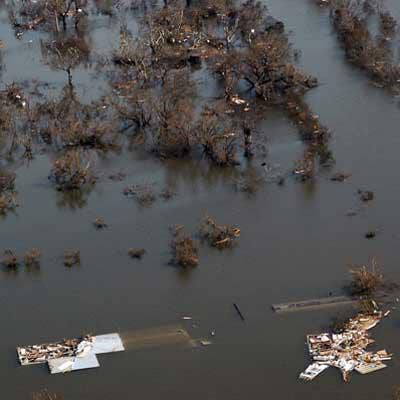
Disaster Recovery: What We Don't Know Could Mean Lost Opportunities
Disasters come in all sizes, from a hurricane or nuclear reactor breach to a local wind blowing down a power line. And, disasters can strike at any time, most often when a business is least prepared.
For solution providers, potential disasters spell opportunity. Despite the headlines about the latest storm or lost laptop, there are still companies large and small that require help setting up new disaster recovery or business continuity plans, or in enhancing plans they may already have in place.
To help open the door to such opportunities, CRN has gleaned some interesting statistics sure to get attention from customers. Turn the page, get the stats and start calling those customers.
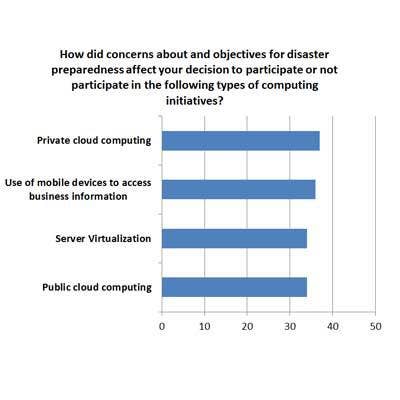
Disaster Recovery Plans Impact New SMB Tech Investments
In a survey conducted in February and March by ReRez Research for Symantec on disaster recovery preparedness among 2,035 SMBs of up to 250 employees, Symantec found that executives took disaster recovery planning into account when looking at investing in new technologies.
About 34 percent of executives surveyed said disaster recovery had a moderate or very large effect on the decision to adopt public cloud computing, 34 percent said the same for server virtualization, 36 percent said it for the use of mobile devices to access business information and 37 percent said it for private cloud computing.
CRN Channel Takeaway: Disaster recovery preparedness is a major selling point for new IT technologies.
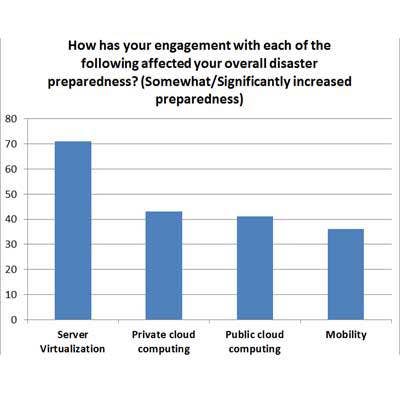
Early SMB Adoption Of New Tech Improves Disaster Recovery Preparedness
Once SMBs adopted mobile, virtualization and cloud technologies, they found themselves better prepared to meet disasters, according to the Symantec survey.
Seventy one percent of SMBs that adopted server virtualization said they found themselves somewhat or significantly better prepared for recovering from a disaster than before adoption of the technology. This compared to 43 percent that found they were better prepared for disasters after they adopted private clouds, followed by 41 percent that felt more prepared after they adopted public clouds and 36 percent that felt better prepared after they adopted mobility.
CRN Channel Takeaway: Once an SMB customer takes the plunge and invests in new IT technologies, it's time to follow up with information on how to take advantage of the new tech for disaster recovery purposes.
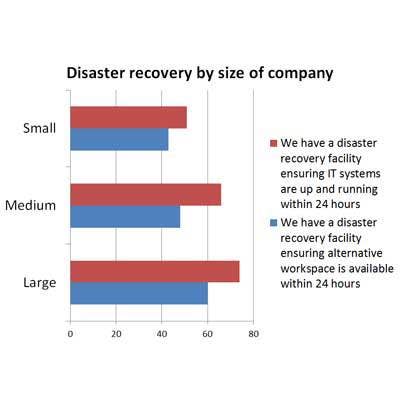
Small Firms Still Lag Larger Businesses In Business Continuity Readiness
Regus, a London-based provider of flexible workspace for businesses worldwide, found in a late 2011 survey of 12,000 businesses that the larger the company, the more ready it is to handle a disaster.
Only 51 percent of small businesses have an IT business continuity plan in place, ensuring IT systems are up and running within 24 hours, compared to 74 percent of large businesses, Regus found. About 60 percent of large businesses have a workspace business continuity plan in place, compared to only 43 percent of small companies.
CRN Channel Takeaway: Business continuity, which takes care of the other details after a disaster once the IT infrastructure comes back up, represents a nearly untapped potential business for solution providers.
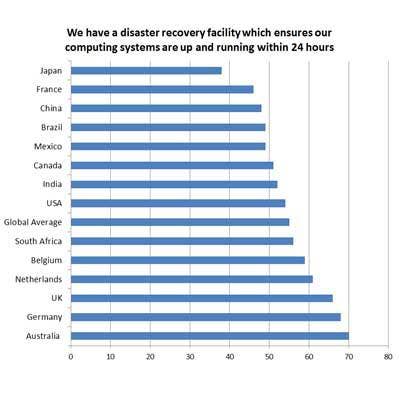
U.S. Businesses Lag Behind Others In Disaster Preparedness
About 54 percent of U.S. businesses have a disaster recovery facility that enables IT systems to be up and running within 24 hours of a disaster, which is about average when compared to businesses around the world.
However, only about 41 percent of U.S. businesses are prepared with an alternative workspace facility that can be used to bring up business operations within 24 hours of a disaster, far below the worldwide average.
CRN Channel Takeaway: Don't let customers fall into the trap of thinking they are ready to handle a disaster with proper DR and business continuity plans. The U.S. as a whole is not as ready as most of the world.
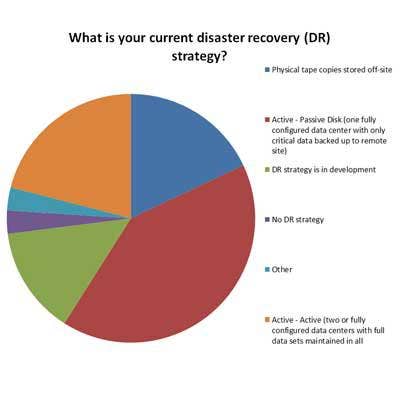
Tape Still A Big Part Of DR, But Off-Site Data Centers Still Tops
In a recent Sepaton survey of 95 enterprises about their strategies, 41 percent of respondents said their most popular disaster recovery strategy was an active-passive configured data center, which is where all of a company's data is backed up to one fully configured data center with mission-critical data replicated to a remote site.
Twenty-one percent cited active-active data centers, in which a full set of the company's data is maintained in two or more data centers.
Sepaton also found that 18 percent of respondents still depend on off-site tapes as their primary strategy. The other 20 percent use some other strategy, are developing a strategy or have no strategy.
CRN Channel Takeaway: There are still plenty of opportunities to get customers to move from tape to other disaster recovery strategies, even at the enterprise level.
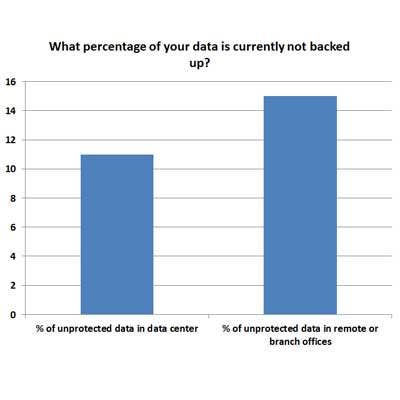
More Data In Remote Offices Need To Be Protected
The Sepaton survey also reported that while 11 percent of data in enterprises' data centers was protected by a less-than-adequate disaster recovery plan, the figure for remote offices was 15 percent.
However, Sepaton said both were improvements from the same survey done a year ago, when over a third of data in remote offices was not protected from potential disasters.
CRN Channel Takeaway: Don't forget to take remote office data into consideration when designing disaster recovery plans.
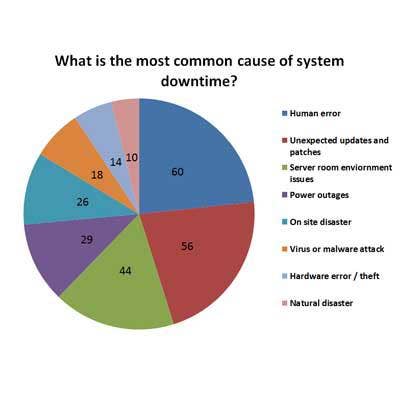
Human Error The Top Cause Of Data Center Downtime
Acronis, working with the Ponemon Institute, late last year surveyed 6,000 IT practitioners and found that 86 percent of companies experienced one or more instances of system downtime in the previous 12 months. Those downtimes lasted 2.2 days on the average and cost each business an average of $366,363 a year.
Onsite disasters such as a fire or explosion was a factor in only 26 percent of system down times, while natural disasters such as earthquakes were a factor in only 10 percent. This compares to 60 percent caused by human error, 56 percent by unexpected updates and patches, 44 percent by server room environment issues and 29 percent by power outages.
CRN Channel Takeaway: Disaster recovery is not just for the big, headline-grabbing disasters but instead is urgently needed for all the little disasters waiting to happen.
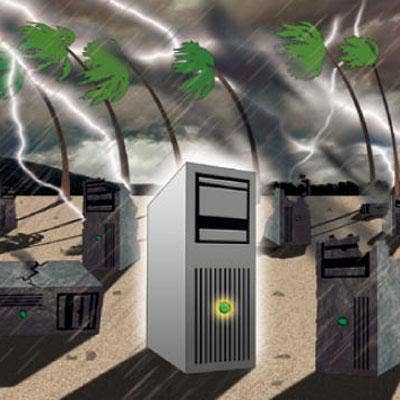
Customers Still Not Protecting Virtualized Data
The Acronis/Ponemon Institute survey also found that most companies are falling short in terms of protecting virtual machine data.
About 33 percent of businesses admitted they do not back up virtual servers as often as they do their physical servers. About 49 percent, of businesses said they back up their virtual machines weekly or monthly. Only 37 percent back up their virtual machines on a daily basis.
CRN Channel Takeaway: Given the fact that over half of new servers being installed are virtual servers, and given the potential for virtual desktops to grow into a major business, solution providers need to be able to help customers protect their virtual infrastructures from a disaster.